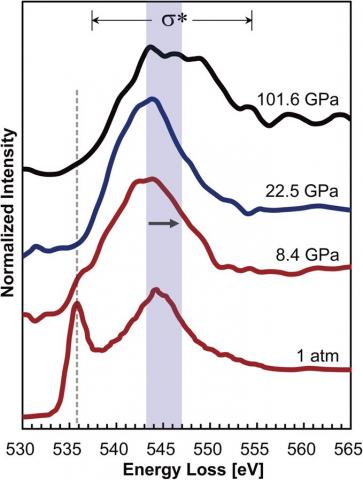Inelastic x-ray scattering at megabar pressures
When compressed above megabar pressures (>100 GPa), glasses may undergo structural transitions into more densely packed networks that differ from those at ambient pressure. Inelastic x-ray scattering (IXS, or X-ray Raman scattering), which can probe core electron excitation from glasses in a diamond anvil cell (DAC), has enabled exploration of the pressure-induced changes in atomic configurations of elements in oxide glasses under extreme compression. While IXS provides a rare opportunity to probe the pressure-induced bonding transitions, a decade of efforts to collect an IXS signal from any matters beyond 100 GPa have not been successful, because of the inherent challenges of IXS techniques (with a signal intensity several orders of magnitude smaller than that of elastic x-rays) and the increasing background signals from the gaskets and anvils.
While the signal reduction of incident and scattered photons is inevitable, a polycapillary post-sample collimator with improved x-ray optics provides a new opportunity to collect the signal primarily from the sample, with significantly reduced background signals. This provides the potential to explore details of structural transitions in glasses at megabar pressures. Using the enhanced capability at HPCAT, a research group measured IXS spectra for prototypical B2O3 glasses at high pressure up to ∼120 GPa, where it is found that only four-coordinated boron ([4]B) is prevalent. The reduction in the [4]B–O length up to 120 GPa is minor, indicating the extended stability of sp3-bonded [4]B. In contrast, a substantial decrease in the average O–O distance upon compression is revealed, suggesting that the densification in B2O3 glasses is primarily due to O–O distance reduction without the formation of [5]B. Together with earlier results with other archetypal oxide glasses, such as SiO2 and GeO2, these results confirm that the transition pressure of the formation of highly coordinated framework cations systematically increases with the decreasing atomic radius of the cations. These observations highlight a new opportunity to study the structure of oxide glass above megabar pressures, yielding the atomistic origins of densification in melts at extreme conditions such as at the Earth’s core– mantle boundary. More in Lee et al, PNAS,

